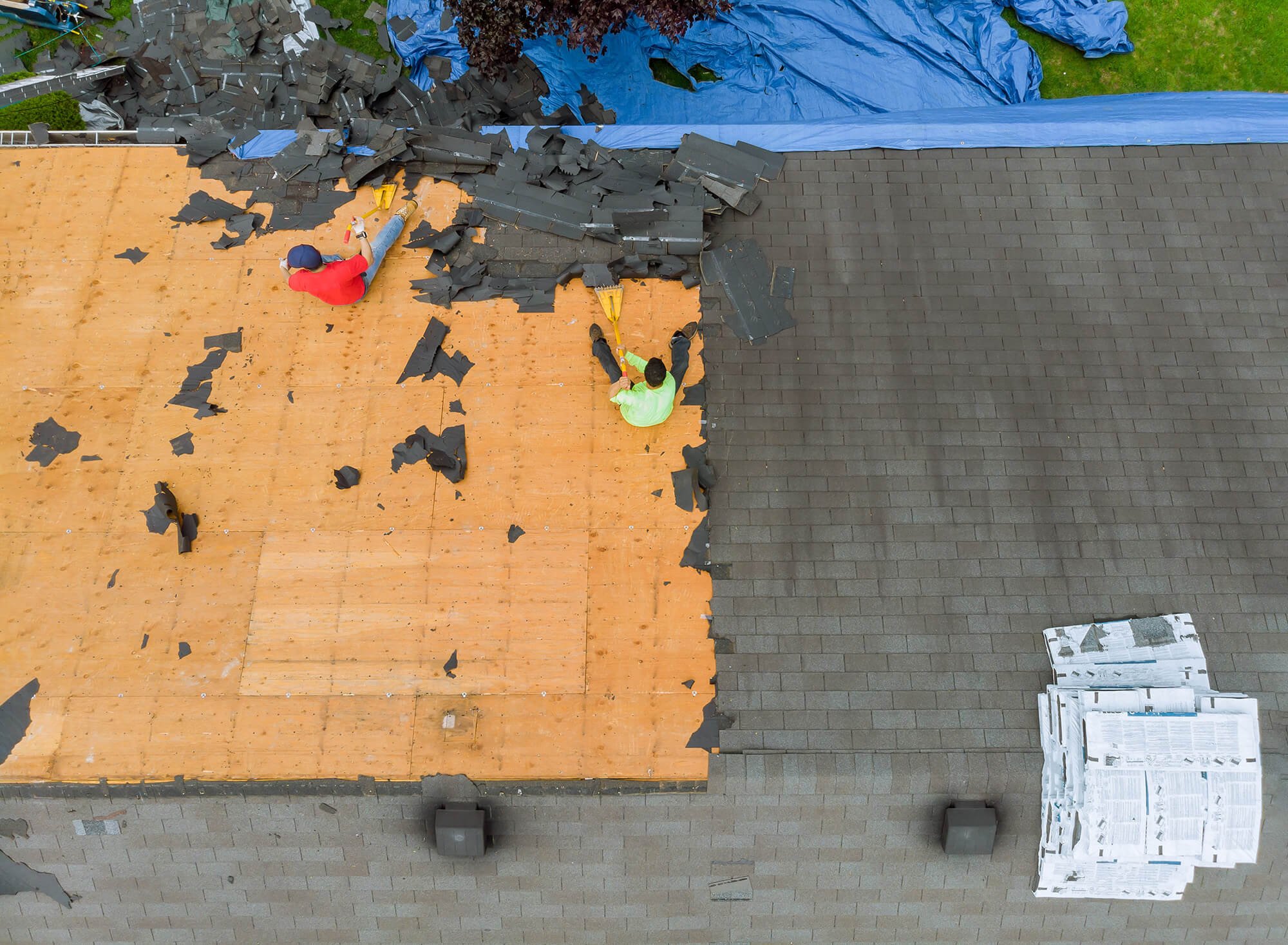A Step-by-Step Guide: Roof Replacement Process
If you’ve ever wondered how to replace a roof, you’re not alone!
Kickstarting a roofing project, especially a roof replacement, is daunting for anyone who hasn’t traveled this path before. It’s a major construction that unfolds directly above your head.
But don’t worry! With the right guidance, you can transform your home and make sure it stays cozy and leak-free for years to come. In this step-by-step roof replacement guide, we’ll walk you through the entire process, providing expert advice on finding the best residential roofing services in your area.
1. Finding a Reputable Roofing Contractor
Every successful roof replacement journey begins with finding a reliable roofing contractor. Roof replacement services are specialized, and the expertise of the professional you choose can make or break the project.
Look for a local roofing contractor with a solid reputation and verified track record. For example, if you’re in the Reno, NV area, consider a well-regarded roofing contractor in Reno, NV.
Recommendations from friends and neighbors can also be a valuable resource.
2. Inspecting and Assessing Your Roof
After you’ve noticed some damage to your roof or its general state of disrepair, examine it thoroughly. Inspect your roof for missing or damaged shingles, signs of water damage, and any areas where it may be sagging. This initial inspection will help you determine the extent of the replacement needed.
In case you don’t know what to look for, hand over the reins to a reliable contractor. They can draft a detailed report and help you make informed decisions about your roof replacement process.
3. Obtaining Necessary Permits and Approvals
Before the actual work begins, you must obtain the necessary permits and approvals from local authorities. Some community Homeowners Associations (HOAs) and Architecture Review Boards (ARBs) regulate the type of roofing materials allowed, including the colors you can select.
The permit process alerts your residential roofing service company to any materials or installation guidelines specific to your area. The last thing you’d want is to install a new roof, only to discover the material type or color isn’t allowed in your community.
4. Choosing the Right Roofing Materials
Selecting the right materials is a critical decision that can significantly impact your roof’s longevity and aesthetics. Classic asphalt shingles, durable metal roofing, or eco-friendly options- the choice is yours. Consider factors like durability, weather resistance, and your budget to settle on the best options for your home.
5. Preparing for the Roof Replacement
As the chosen materials make their way to your doorstep, it’s time to prepare your home for the upcoming transformation. Clear the surrounding area, move outdoor furniture, and create a safe workspace for the roofing crew. Communicating with your neighbors about the impending noise and disruptions can also go a long way in fostering goodwill during the roof replacement process.
6. Removing the Old Roof
The day has arrived! The most visually dramatic step in the steps to replace a roof is the removal of the old shingles.
With the stage set, the crew will begin the meticulous process of removing the old roof with spades and pitchforks. They’ll also remove old components like metal eave drips, pipe boot flashing, and any metal/plastic vents that may be on the roof.
Removing a roof requires skill and precision to avoid any damage to the underlying structure. Be prepared for a bit of noise and mess, but remember, it’s a small price to pay for a brand-new roof.
7. Installing a New Underlayment and Materials
Once the old roof is off, shift the focus to the underlayment. The underlayment is a critical layer that provides an extra barrier against water infiltration. The most common materials used for this layer are felt paper and a synthetic mixture of fiberglass or polyester. This roof replacement step is like giving your home fresh, weather-resistant armor that will stand strong against rain, wind, and snow.
8.Installing the New Roof
Now for the most exciting part- installing the new roof. Whether you’ve opted for traditional shingles, metal roofing, or another material, a skilled team will methodically install each component, paying attention to detail and craftsmanship.
How to shingle a roof step-by-step is a question best answered by seasoned professionals who understand the intricacies of the materials you’ve chosen. Trust them to work their magic and transform your home in the blink of an eye.
9. Final Inspection and Clean-Up
With the new roof in place, it’s time for the final inspection. Your contractor will examine every inch to ensure perfection. They’ll pick up the tools, sweep away the debris, and leave your property looking spick and span. You can expect this to take an hour or two depending on the size of your home.
How Long Does It Take to Replace a Roof?
Ah, the burning question- how long does it take to replace a roof?
The duration of the roof replacement process depends on various factors, including the size of your roof, the materials used, and weather conditions. On average, a project can take anywhere from a few days to a couple of weeks. Your contractor will provide a realistic timeline during the planning phase.
The Bottom Line
Embarking on a roofing journey may seem daunting, but with the right roof replacement guide, it can become more manageable and rewarding. From finding the right contractor to the final shingle, these roof replacement steps ensure a sturdy, reliable, and visually appealing roof over your head.
Ready to elevate your home’s protection? Trust Mountain Vista Roofing’s expert team for seamless roof replacement services. Get in touch with us today!

